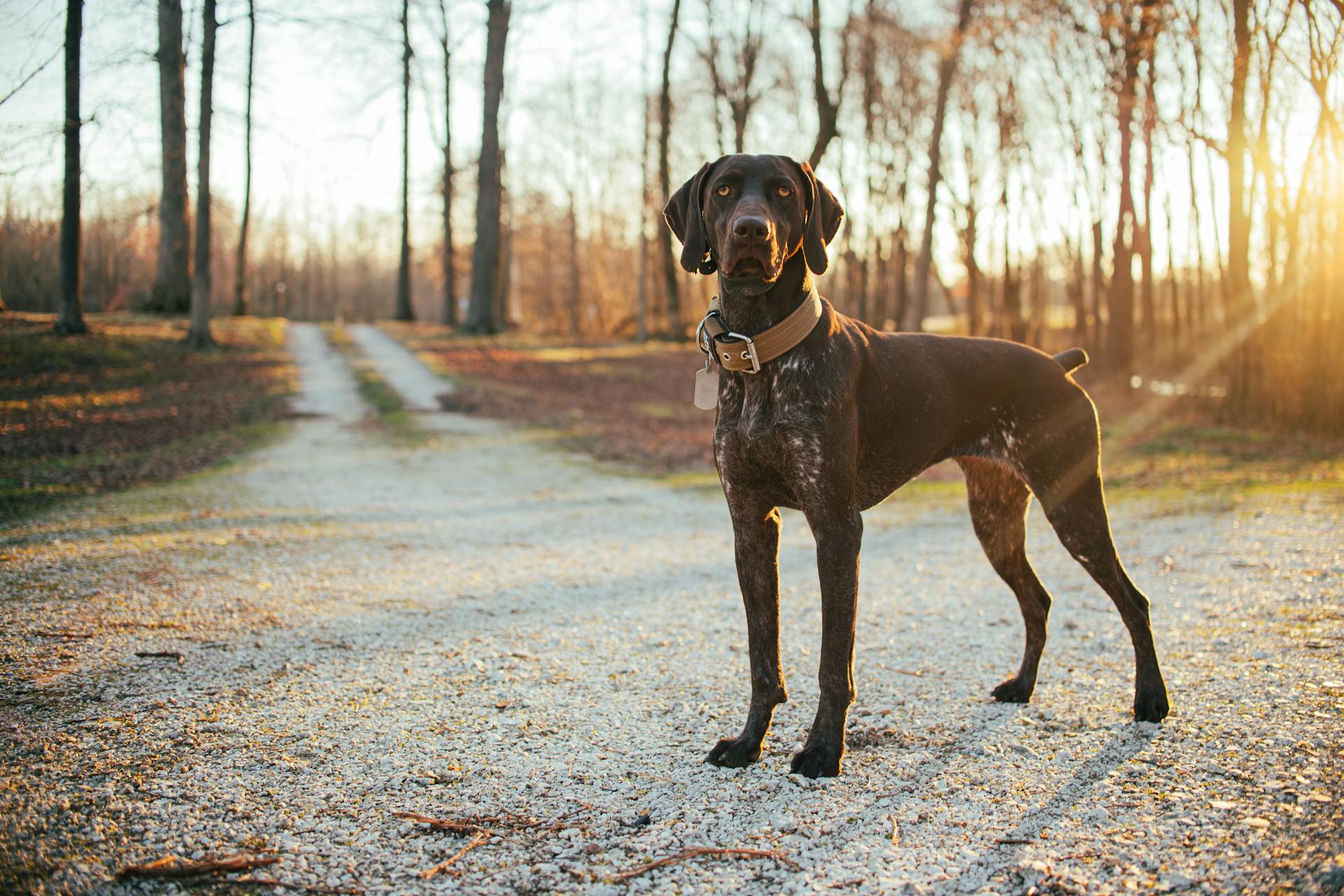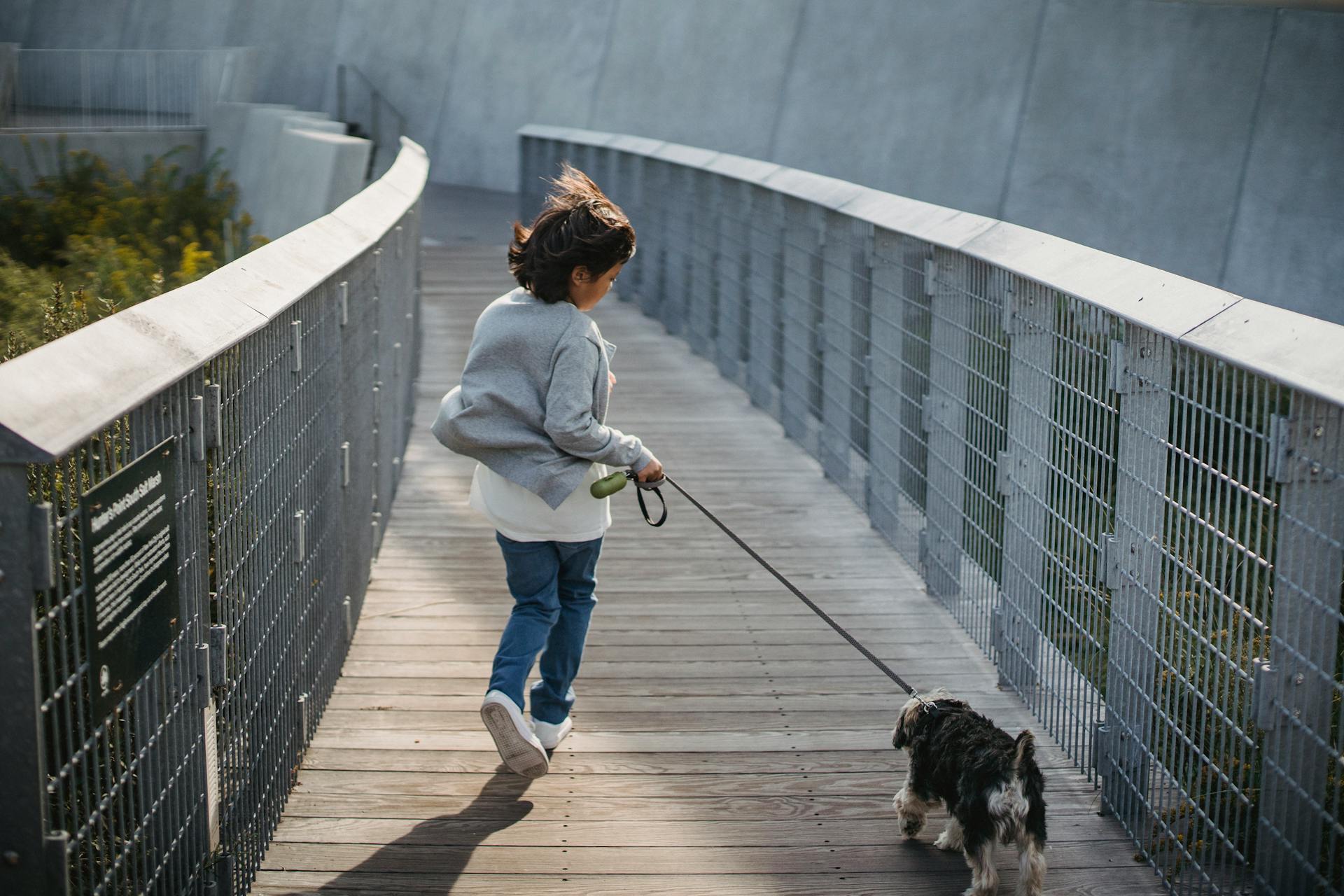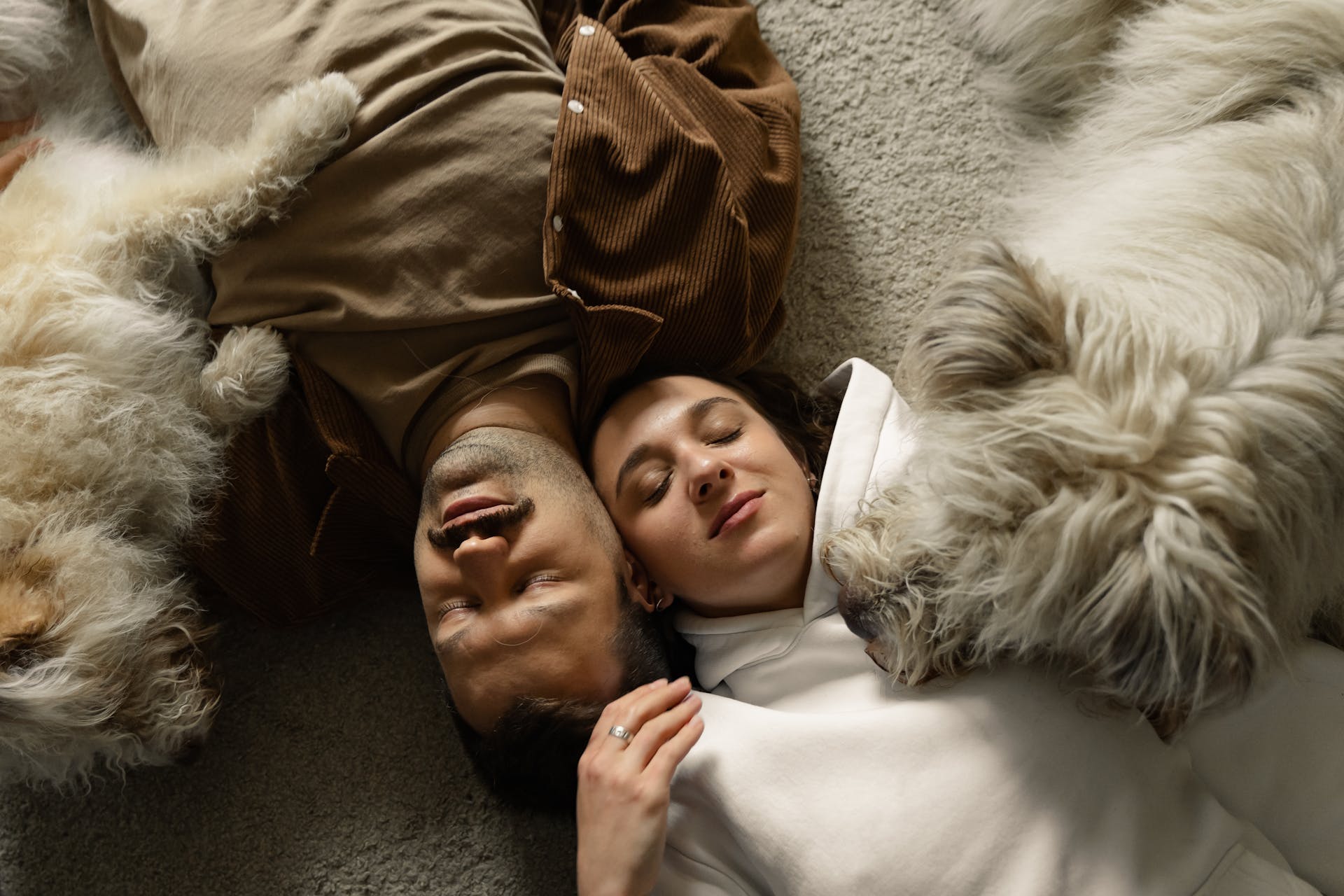
A reverse sneeze is a sudden, intense inhalation through the nose, often triggered by an irritant in the nasal passages. This can be caused by a variety of factors, including allergies, cold air, or even excitement.
If your dog is reverse sneezing, you may notice a loud, high-pitched sound, and their throat may appear to be constricted. They may also exhibit signs of distress, such as pawing at their mouth or nose.
It's essential to be able to identify the difference between choking and reverse sneezing to provide the right care and comfort for your dog. By understanding the causes and symptoms of reverse sneezing, you can help your furry friend feel better and alleviate your own anxiety.
What Is It?
Reverse sneezing in dogs is a relatively common phenomenon that can be alarming to witness. It's characterized by a distinctive sound, often described as a loud, honking or snorting noise.
This sound is usually accompanied by rapid breathing and a visible effort to inhale. The dog's face may also turn red due to the increased blood flow.
The symptoms can be quite intense, but in most cases, reverse sneezing is not a sign of a serious underlying health issue.
Causes and Risk Factors
Reverse sneezing in dogs is a common phenomenon that can be caused by a variety of factors. Excitement can trigger a reverse sneezing episode, and it's not uncommon to see dogs get overexcited while playing or meeting new people.
Some breeds are more prone to reverse sneezing due to their physical characteristics, such as flat-faced breeds with long soft palates that can extend into the airways too far. Irritations like allergies, eating or drinking, and foreign bodies like foxtails can also cause reverse sneezing.
Other potential causes of reverse sneezing include perfumes, candles, incense, or cigarette smoke, as well as bacteria or viruses, chemicals like household cleaners, and even tumors in the nasal cavity. These irritants can cause a spasm in the throat and soft palate, leading to the characteristic reverse sneezing sound.
Here are some common causes of reverse sneezing in dogs:
- Excitement
- Eating or drinking too fast
- Foreign bodies
- Allergies
- Perfumes
- Viruses
- Pulling on a leash
- Household cleaners or chemicals
Commonly Affected Breeds, Gender, and Ages
Dogs with long noses are more commonly affected by reverse sneezing due to their narrower nasal passages.
Small breed dogs seem to be affected more often than larger breeds.
Flat-faced dogs are also more prone to reverse sneezing.
There is no gender or age predilection, meaning that reverse sneezing affects dogs of all ages and genders equally.
What Causes It?
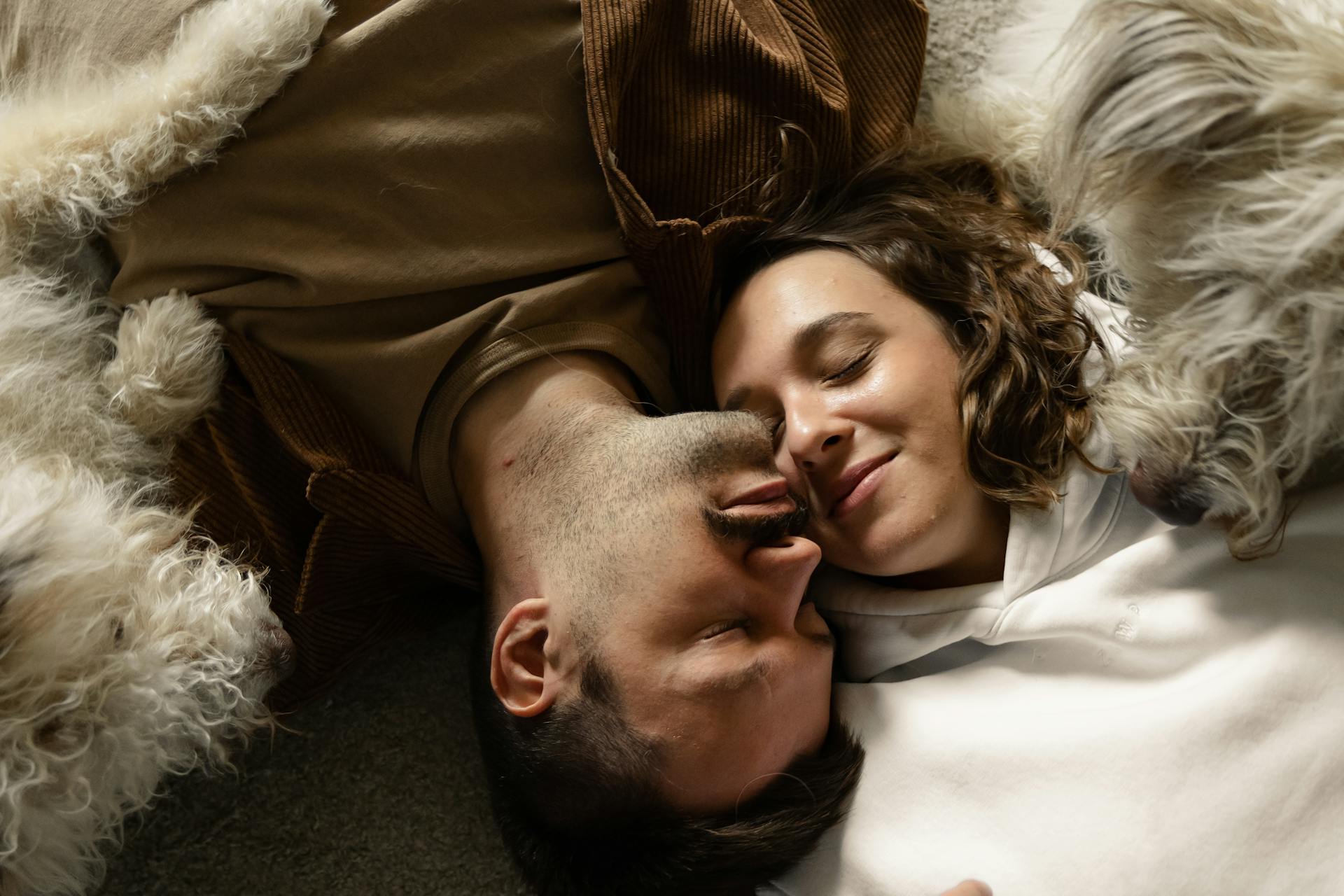
Reverse sneezing in dogs is a common issue that can be triggered by various factors. Excitement, for example, can cause a spasm in the throat and soft palate, leading to reverse sneezing.
Eating or drinking too quickly can also irritate the throat and trigger an episode of reverse sneezing. I've seen dogs gobble down their food in seconds, only to start reverse sneezing a minute later.
Allergies can cause irritation in the throat and soft palate, leading to reverse sneezing. Pollen, dust, and other allergens can be particularly problematic for dogs.
Foreign bodies, such as foxtails or mites, can also cause irritation and trigger reverse sneezing. These tiny invaders can get stuck in the throat and cause a spasm.
Pressure on the throat, often from pulling on the leash, can also lead to reverse sneezing. Dogs who are prone to pulling on the leash may experience more frequent episodes of reverse sneezing.
Recommended read: English Bulldog Soft Palate Surgery

Some common irritants that can cause reverse sneezing include perfumes, household cleaners, and chemicals. These substances can be particularly problematic for dogs with sensitive noses.
Here are some common causes of reverse sneezing:
- Excitement
- Eating or drinking too quickly
- Allergies
- Foreign bodies
- Pressure on the throat
- Perfumes, household cleaners, and chemicals
It's worth noting that some breeds, such as flat-faced breeds, may be more prone to reverse sneezing due to their anatomy.
See what others are reading: Dog Breeds Watch Dogs
Symptoms and Signs
Dogs that are reverse sneezing often make honking, snorting, and spluttering noises that sound like something's stuck in their nose or throat.
These episodes can be alarming, but they usually clear up within one to two minutes with no ill effects.
A dog experiencing reverse sneezing may extend their neck and gasp with an alarming snorting sound, and their elbows may be turned out and their eyes may bulge as they have difficulty getting air into their lungs.
Here are some common symptoms of reverse sneezing:
- Gasping
- Difficulty drawing air
- Extended neck
- Snorting
Some dogs may also exhibit a static posture, stretch their neck upward, and have wide eyes, with faster than usual breathing movements that may emit nasal sounds.
What Is Reverse Sneezing?
Reverse sneezing, also known as pharyngeal gag reflex, can appear quite alarming at first glance.
Symptoms during an episode of reverse sneezing include an extended neck, and the dog gasps with an alarming snorting sound.
The elbows are often turned out and their eyes bulge as they have difficulty getting air into the lungs due to the narrowing of the trachea.
Here are the common symptoms of reverse sneezing:
- Gasping
- Difficulty drawing air
- Extended neck
- Snorting
These symptoms usually clear up within about one to two minutes, with no ill effects.
Presentation and Signs
Reverse sneezing in dogs can be a concerning sight, but it's essential to know what to look for. A dog that is reverse sneezing will make honking, snorting, and spluttering noises that sound like something's stuck in his nose or throat.
These noises are actually the dog rapidly pulling air into his nose, rather than exhaling it out. You may see a dog extend his neck and chest as he tries to inhale a normal breath.
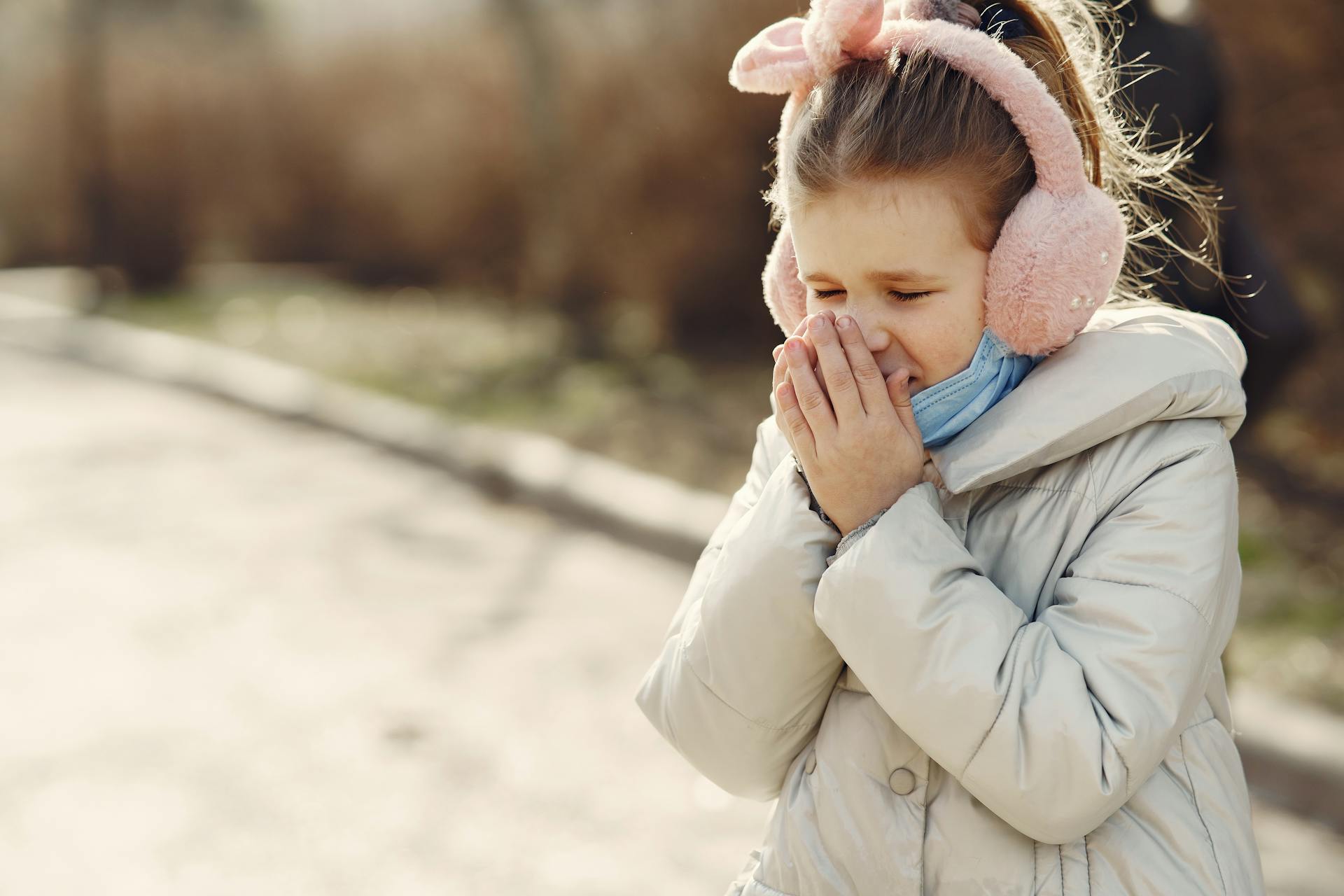
Here are the common signs of reverse sneezing in dogs:
- Gasping
- Difficulty drawing air
- Extended neck
- Snorting
These symptoms usually clear up within about one to two minutes, with no ill effects. However, if your dog is experiencing reverse sneezing on a regular basis, it's essential to visit the veterinarian to rule out other conditions.
Diagnosis and Treatment
Diagnosis of reverse sneezing is usually made through a veterinarian's oral description of the episodes and a thorough physical examination. Your veterinarian will take a history from you about your dog's episodes and look for signs of a problem other than reverse sneezing.
If you're unsure whether your dog is reverse sneezing or coughing, try recording an episode to show your veterinarian for verification. This can help identify the issue.
A veterinarian may perform several tests to confirm there are no underlying causes to the behavior, including a physical examination, rhinoscopy, and taking a sample from the nasal passages for biopsy.
Diagnosis of Canine
Diagnosis of Canine Reverse Sneezing is generally made through giving your veterinarian an oral description of your dog's episodes.
Your veterinarian will take a history from you about your dog's episodes to help identify the problem.
Some conditions, like collapsing trachea, upper respiratory infection, and tracheobronchitis (commonly called kennel cough), may present with similar signs to reverse sneezing.
A thorough physical examination is necessary to look for signs of a problem other than reverse sneezing.
Video recording an event can be helpful to show the doctor and aid in diagnosis.
Check this out: Pitbull Dog Signs
Treatment of
In most cases, reverse sneezing in dogs doesn't require treatment, but there are times when a vet visit is necessary.
If you're unsure whether your dog is reverse sneezing or experiencing another issue, try recording an episode to show your vet for verification. This can help determine the best course of action.
Some dogs may need to see a vet if their reverse sneezing becomes chronic, extensive, or starts suddenly and occurs often. Your vet may want to test for allergies, polyps, or other conditions that can be treated to improve the reverse sneezing.
Additional reading: Vets Dog Treats
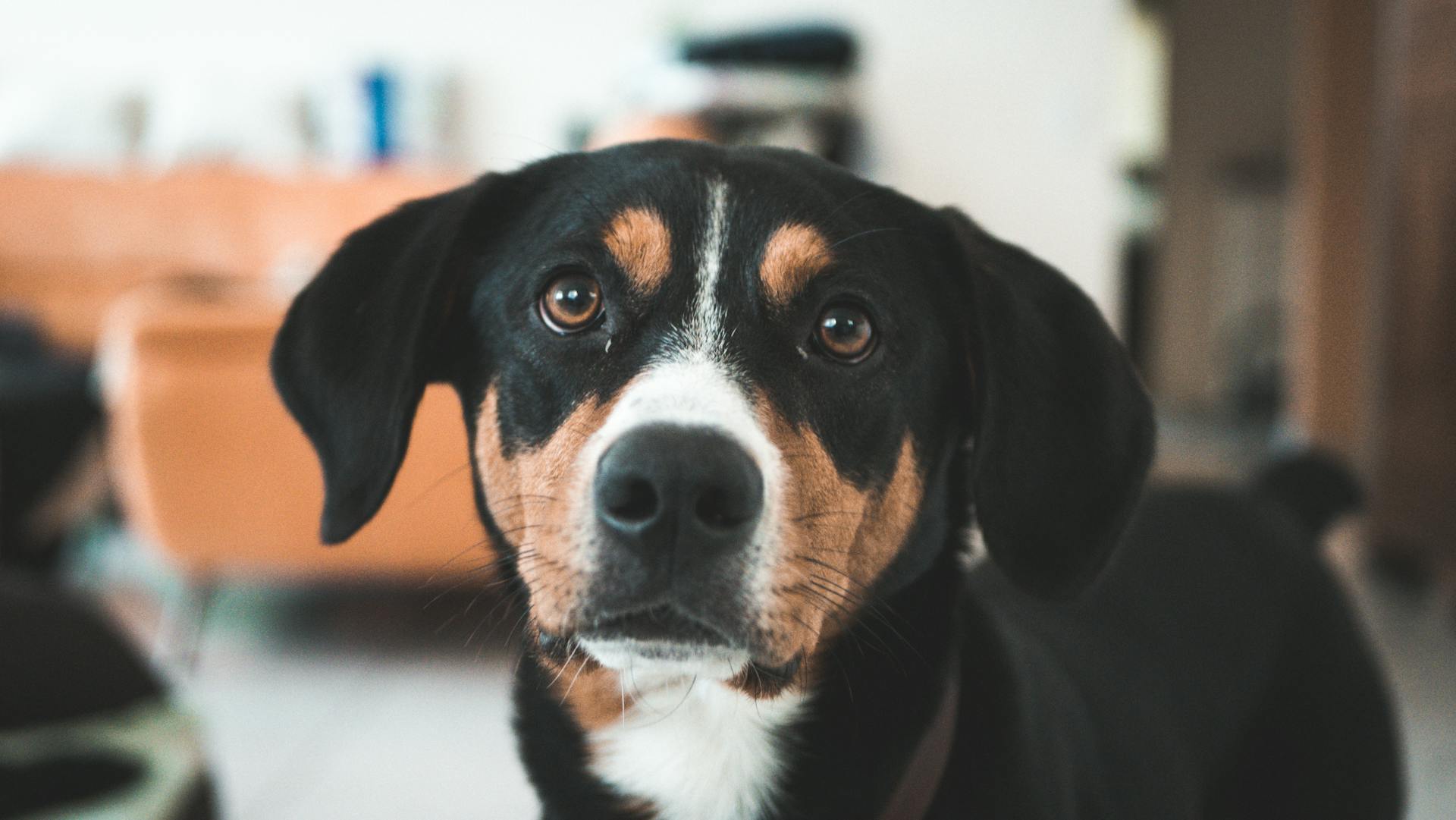
If your dog is experiencing nasal discharge, lethargy, or a cough along with reverse sneezing, further testing will be required.
If an underlying cause like allergies or mites is found, addressing that condition can help reduce the frequency and intensity of reverse sneezing episodes.
Antihistamines may be prescribed to ease allergic reactions, and any polyps or growths will need to be removed for easier breathing.
If the reverse sneezing is idiopathic, meaning the cause is unknown, it may not require treatment.
You can help shorten the duration of an episode by channeling the air through the mouth rather than the nasal passages. This can be done by closing off the nostrils with your hand for a few seconds and allowing your dog to breathe through their mouth instead.
Mild cases of reverse sneezing may be best left untreated.
Infections are usually treated with antibiotics and anti-inflammatories.
Dogs with short faces, or brachycephalic breeds, may need a cortisone injection to settle airway swelling and reduce distress.
A different take: How Much Exercise Do Labrador Retrievers Need
Frequently Asked Questions
How do you tell the difference between a reverse sneeze and a collapsed trachea in dogs?
Dogs experiencing a reverse sneeze will make a loud snorting sound, while a collapsed trachea produces a distinctive 'honking' sound. Knowing the difference is crucial for proper diagnosis and treatment
What can be mistaken for reverse sneezing in dogs?
Reverse sneezing in dogs can be mistaken for respiratory distress, coughing, or choking, making it essential to identify the correct cause of the symptoms. If you're unsure, consult a veterinarian to rule out any underlying health issues.
Sources
- https://www.doghealth.com/health/respiratory/2287-reverse-sneezing-in-dogs
- https://wagwalking.com/condition/reverse-sneezing
- https://www.walkervillevet.com.au/blog/reverse-sneezing-dog/
- https://nhvpethealth.com/blog/reverse-sneezing-in-dogs/
- https://dogtime.com/dog-health/52371-dog-honking-reverse-sneezing
Featured Images: pexels.com

